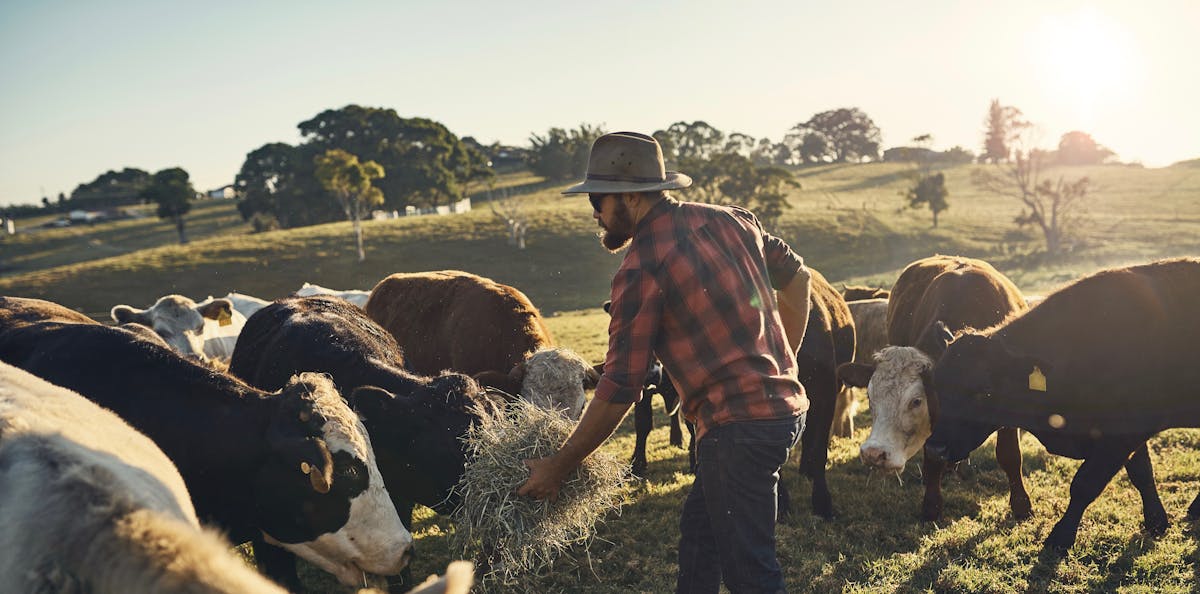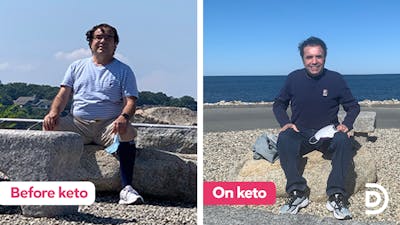The green keto meat eater, part 2
Part 1 of this series examines the state of the current war on meat and how a conscious keto eater can find peace and a path forward.
Part 2, below, explores the link between cows and climate change and how a burgeoning worldwide movement in holistic regenerative agriculture is using cows to help draw carbon out of the atmosphere and store it in the soil.
Part 3 looks at the economics and practicalities for more wide-scale regenerative agriculture and how policies, emerging carbon markets, consumer choice, and other mechanisms can foster agricultural incentives to produce green animal products that are widely available, affordable and helping the planet reverse greenhouse gas emissions.
Part 2: Cows, carbon and climate: It’s not the cow, it’s the how
When Chris Kerston was managing a 2000-acre farm in Northern California, he decided to integrate livestock into his orchards, which included 600 acres of olives and avocados.
He had heard about the work of famous Zimbabwe ecologist, Allan Savory. From the 1960s, Savory had been promoting a form of livestock management that regenerated degraded soil by mimicking the movements of herbivores and predators in nature — keeping livestock bunched and moving over the land, then letting the grass re-grow before the cattle return.
So Kerston added cows and sheep into the orchards to munch the grass, removing the need to mow around the trees. The animals’ manure fertilized the ground, and their hooves trampled the grass creating a matted mulch and divots that collected water and improved soil moisture retention.
The trees’ leafy canopy provided shade for the livestock in the hot summer. Goats were added to eat the invasive weeds. Free-range chickens happily followed after the livestock, scratching and dispersing all the animals’ dung into the soil, pecking out all the bugs, removing the need for pesticides. The chickens, too, fertilized the soil with their own nitrogen-rich chicken poop.
It was a beautiful, natural cycle that not only created rich fertile soil, it made the orchards and the livestock flourish and increased the farm’s profits. The ranch sold its grass-fed, free-range meat and eggs, as well as its orchard harvests from a market store on site.
“We ended up reducing our fuel usage on the farm by 80% because we no longer needed to mow. We eliminate our need for fertilizer, pesticides, and herbicides. We reduced our need for irrigation. And we became more profitable because our costs went down and we could sell everything we raised. We became a one-stop-shop for consumers for local produce,” said Kerston.
Healing the land, feeding the people
Kerston is now director of public outreach for the Savory Institute, a global non-profit organization devoted to spreading the world about regenerative agriculture practices like this, using livestock in specific ways that can capture carbon from the atmosphere, regenerate the world’s degraded soils and help reverse climate change.
The Savory Institute now has more than 30 global hubs that promote, teach and demonstrate the principles of regenerative agriculture, including locations in the US such as Arizona, California, and Texas, as well as very active hubs in Sweden, the UK , Argentina, Australia and Africa.
“The land is healing while still producing high-quality products for human use and consumption,” said Kerston.
For those of us who have experienced dramatic improvements in our health by embracing the low carb high fat, or ketogenic diet, it can be distressing to repeatedly hear from detractors that the keto diet — specifically eating meat and dairy — is contributing to climate change and environmental degradation.
In part 1 of this series, we delved into the current meat-eating wars, and the heated, polarized debate about livestock’s impact on the planet that sometimes pits vegans and vegetarians against low-carb ketogenic eaters.
The main environmental issue is the greenhouse gas emissions from livestock, which currently represent about 14.5% of all global green house gas emissions.
In this post, part 2, we examine more closely the inspiring farmers and researchers who are devoting their lives and energy to practicing and promoting holistic agriculture practices. These practices capture carbon dioxide from the atmosphere and store carbon in the soil, restoring soil fertility and vitality, improving water tables, and raising nutritious crops and animal products in humane and natural conditions.
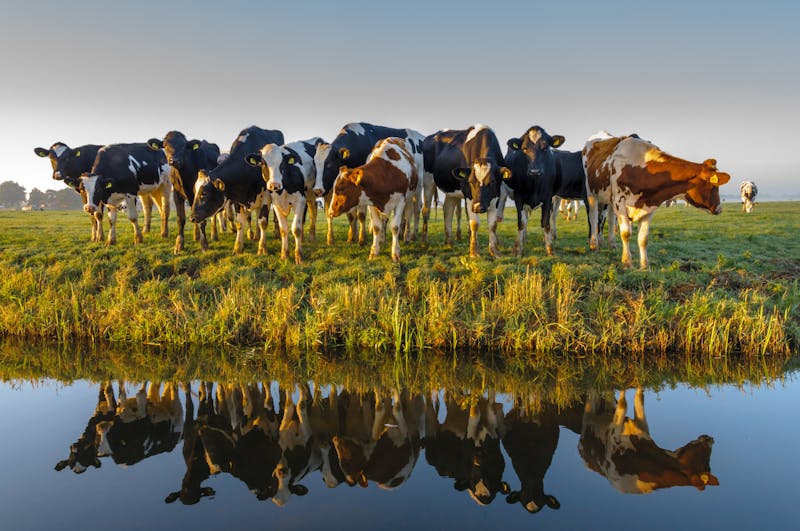
Bad health, bad food, bad land — it’s all connected
These holistic regenerative agricultural practices are as diametrically opposed to unhealthy industrialized chemical factory farming as, well, a wholesome diet of low-carb natural ketogenic foods is from a diet full of unhealthy sugar and highly processed refined carbohydrates.
There are distinct parallels between healthy low-carb real food, like that promoted at Diet Doctor, and healthy regenerative agriculture promoted by the Savory Institute and others.
The people in the low-carb community have learned by their own experience of improving their health that all food calories are not the same — a calorie from a sugary or refined carbohydrate product impacts the body differently than a calorie from a floret of broccoli or a juicy steak.
The holistic regenerative agriculture movement is showing that all livestock management and agriculture is not the same. A mono-cultured, chemically raised crop or animal product from an industrial, factory farm or Confined Animal Feeding Operation (CAFO) impacts the soil and planet differently from one produced with regenerative agriculture principles.
“When someone is eating meat from land that is getting better as a result of how that animal was raised, you can eat as much or as little as you want and you are not harming the environment,” said Kerston. “If you decide that you are going to cut down on the amount of meat you eat a few days a week, like meatless Mondays, with the thought it will help the environment, but you are still consuming CAFO meat full of hormones that is doing a tremendous amount of damage to the environment, no one is winning from that.”
In short, it is all connected. Just like Diet Doctor and others in the low-carb, high-fat movement who are devoting their lives to showing there is a better way to eat, farmers doing regenerative agriculture are showing there is a better way to produce high-quality food that contributes to better health for the population, better animal welfare and better health for the planet.
Allan Savory: grandfather of an inspiring yet controversial movement
Allan Savory had observed herbivores and predators in the African savannah in the 1960s. For decades, without too much wider attention, he promoted specific ways to use livestock to mimic this ancient prey-predator movement pattern to reverse desertification of land and improve soil health and fertility.
His methods came to wider public notice, however, after his hugely popular 2013 Tedtalk “How to green the world’s deserts and reverse climate change.” It has had more than 4.5 millions views and climbing. No wonder: it is an inspiring, uplifting, and hopeful entreaty to raise livestock differently, and save the planet, too. While complex in all its planning details, his method of moving cattle is in essence a form of planned mob grazing of cattle — what Savory calls “Holistic Planned Grazing.” Savory’s book Holistic Management,1 now in its Third Edition, is the highly respected handbook for how to do it.
Savory is the grandfather of the regenerative agriculture movemenet — a hero to many and lightning rod to doubters. He has garnered considerable controversy from people like influential UK writer George Monbiot and others, who have lobbied criticisms asserting that his methods lack scientific proof and aren’t scalable or realistic.
Others have come to Savory’s defense in impassioned articles such as this excellent response by US environmentalist Hunter Lovins who summarizes the evidence and shares her own experience of regenerating her land. Another vigorous defense of Savory is by Sheldon Firth, author of Letter to a Vegetarian Nation, and a regenerative agriculture advocate who runs the site Regenerateland.com
“Holistic Planned Grazing is currently being used on over 40 million acres worldwide,” says Firth. “It is being used by thousands of producers all over the world with great success.”
Regenerative agriculture to rejuvenate grasslands and store carbon has also been featured in a New York Times article
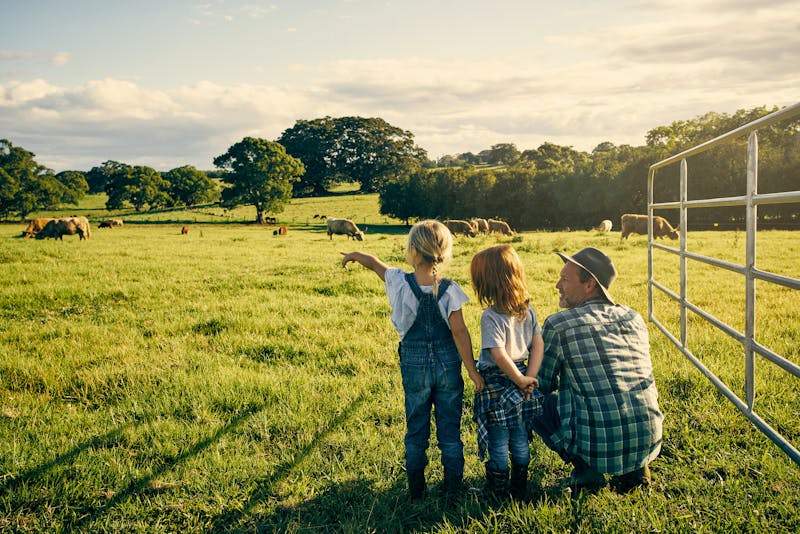



Inspiring farmers lead the way
Some of the well known farmers using versions of the technique include Joel Salatin of Polyface Farms in Virginia, first made famous by author Michael Pollan in his 2006 book The Omnivore’s Dilemma. Salatin, too, has an inspiring TedTalk, a dozen books on sustainable farming and a popular blog.
Another influential farmer is North Dakota’s Gabe Brown, who turned around his failing family farm using regenerative agriculture and planned grazing. The author of the new book Dirt to Soil, he stopped the use of herbicides and pesticide, did no-till planting, used constant covered crops, and changed his livestock grazing practices — and not only restored his soil but raised his farming yields and profit. He has a number of inspiring videos, including a TedTalk, seminars to farmers, and short promotional clips.
Brown is one of the featured farmers in a 12-minute video called Soil Carbon Cowboys — if you watch one film about regenerative agriculture, perhaps watch this one. But one can spend hours upon hours reading articles, documents, academic papers and watching inspiring videos of farmers using regenerative agriculture with fabulous results in New Zealand, Somerset and Devon, Australia, Wyoming, Kenya and Zimbabwe and more. In April 2018, The New York Times Magazine even featured a cover story “Can dirt save the earth?”
These articles and films changed me. I will never look at agriculture the same way again.
In fact, I was changed as much by these stories of holistic regenerative agriculture as I was three years ago by discovering the low-carb high-fat food movement. Back then LCHF turned my health around and has since become of way of eating that will stay with me for the rest of my life. There is no desire to ever go back to a Standard American Diet.
Learning about regenerative agriculture has had the same impact. I now seek out and support farmers and suppliers using these methods. I am convinced that my health, the health of the soil and the planet are all connected in a web of life. For me, there is no going back to the standard chemical industrial agriculture.
But reversing climate change? Get serious!
In April 2017, the earth’s atmospheric carbon dioxide hit 410 parts per million, the highest ever recorded since tracking began in 1958. Studying gas bubbles trapped in glacial ice cores, scientists say it represents the highest CO2 levels in the last 800,000 years, perhaps even 2.7 million years. In spring 2018, measuring stations have regularly recorded carbon dioxide at 411 ppm.
Reducing carbon emissions — especially reducing the burning of fossil fuels — is key to stopping the climbing numbers, but so is drawing down more carbon out of the atmosphere into viable carbon sinks. Planting and maintaining forests, supporting healthy grasslands, reversing desertification, and creating healthy carbon-rich soil — in part by using holistic regenerative agriculture practices — are all proven ways to capture more atmospheric carbon and store it in the earth.
To understand how regenerative agriculture can draw carbon into the soil it helps to understand the planet’s constant carbon cycle. Carbon is a key building block of all matter on earth, living and non-living. It is constantly cycling between the air, soil, and water via all things — rocks, plants, animals, humans etc. Respiration, plant and animal decay, disturbing the soil, forest fires, and burning fossil fuels releases C02 into the atmosphere. Photosynthesis of plants, soil organic matter and soil microbial communities draws CO2 out of the atmosphere and stores it the soil. (The oceans absorb CO2, too.)
Here is a simple explanation of the carbon cycle for kids, and a more complex one, by NASA, that describes the nature of both the slow and fast carbon cycles over the millennia. Here is a great video by Kiss the Ground, a regenerative agriculture site, which explains the carbon cycle, too, how it has gotten out of whack since the Industrial revolution and how storing carbon in the soil can restore the balance.
While not a miracle solution, using regenerative agriculture to store carbon in the soil can be combined with reducing burning fossil fuels and is a realistic way to make a significant impact on carbon levels in the atmosphere, experts say.
Research in California shows that drawing down carbon into the soil (called soil carbon sequestration ) of just one metric ton per hectare on half the rangeland area in California would offset 42 million metric tons of CO2 emissions, an amount equivalent to the annual green house gas emissions from energy use for all commercial and residential sectors in California. Other research shows that for every 1% increase in organic matter in the soil, another 32 tons of CO2 is pulled from the atmosphere.
“Agriculture covers more than 10-billion acres on this planet. And if it is done well, it has the capacity to sequester enough carbon to bring our CO2 levels down to levels of 250 years ago in less than a generation,” says Dan Kittridge, a regenerative farming advocate whose father, Jack Kittridge wrote one of the most comprehensive and widely-shared public documents to explain soil carbon sequestration (also called soil carbon restoration, or carbon farming.)
Carbon-farming organizations bloom
Dozens of organizations around the world are promoting soil-carbon sequestration through regenerative agriculture to help address climate change. Here are just a few:
- Soil4climate
- Carbon Underground
- Savory Institute
- Rodale Institute
- Soil Solutions
- Food and Agriculture Organization (FAO) Soils Portal
- Regeneration International
- Holistic Management International
- Carbon Cycle Institute
- CalCAN
- Kiss the Ground
- 4 per 1000
The last bullet point, 4 per 1000, is a France-led initiative, started in 2015, to increase global actions to boost carbon storage in agricultural soils by 0.4% each year to help mitigate climate change. A 4 minute video, “Soil Solutions to Climate Problems,” narrated by Michael Pollan, was shown by the French Ministry of Agriculture at the 2015 Paris Climate Conference. “A soil solution is right beneath our feet,” says Pollan in the video.
Increasing the amount of carbon in agricultural soil annually by 0.4% would offset 75% of current annual carbon emissions, the initiative says. Since its launch in 2015, more than 25 countries, as well as regional governments, non-profit organizations, research agencies, and companies have signed on.
Granted, holistic planned grazing of livestock is just one of the agricultural techniques to sequester carbon promoted by 4 per 1000. Other techniques include no-till planting, continuous cover crops, intercropping, silvoculture (mixing trees with livestock or with crops), crop diversification, and spreading compost in a layer across the top of the soil.
Better management of livestock, however, is a powerful tool that cannot be dismissed. In fact, most proponents stress livestock management is a key part of the holistic picture. Such management is even spreading into what might be considered more large-scale industrial food systems. The large European dairy company, Danone, for example, announced in November 2017 that it had signed on to France’s 4 per 1000 initiative and will focus on regenerative agriculture to improve soil quality and mitigate climate change for all the dairy farms in its network.
How is it measured and documented?
One criticism of regenerative agriculture, and of its focus on soil carbon sequestration, is how can improved soil carbon be accurately measured and documented? Pretty pictures of green and verdant landscapes and inspiring videos with farmers walking their land don’t cut it with many agricultural scientists. They want to see the data and the standardization of measurement systems that can prove soil is capturing more carbon from the atmosphere by these regenerative agriculture methods.
A number of academic researchers have been rising to this challenge. Professor emeritus, Rattan Lal PhD of Ohio State University was among the first to document how soil could sequester carbon through regenerative agriculture.
Richard Teague PhD, a professor at Texas A&M University, has been studying the role of ruminants (cattle) in restoring carbon to the soil and reducing agriculture’s carbon footprint in North America. His papers have found that properly-managed cattle can result in more carbon sequestration than emissions in agriculture. Researcher Kate Scow PhD at University of California, Davis, is another influential researcher.
Soil scientist Megan MacMuller, PhD, now at the University of Colorado, led a study in the state of Georgia which followed three farms using regenerative agriculture with planned grazing. Her team conducted soil measurements over three years and found that carbon from the atmosphere accumulated rapidly over those years and offered “a rare win-win” to create profitable food creation, healthier soil, and climate-change mitigation through carbon accumulation in the soil.
A study published in May 2018 by Paige Stanley, supervised by Jason Rowntree, PhD, of Michigan State University — and downloaded more than 12,000 times in less than a month — tracked greenhouse gas emissions for four years from cattle raised in feed lots compared to cattle raised through holistic, regenerative agriculture. Among many data points collected, it measured levels of GHG emissions and soil carbon sequestration in both sites. While feed lot cattle produced fewer GHG emissions (they lived for a shorter time), those raised with holistic managed grazing (what those researchers called “adaptive multi-paddock grazing”) had their GHG emissions completely offset by carbon stored in the soil. The study concluded that regenerative grazing of cattle can produce a 30 to 40% improvement in soil carbon compared to no grazing at all.
“For me, all the actions taking place to improve soil quality are fantastic,” said Rowntree in an interview with Diet Doctor. “The soil biology picture is mind boggling and where we are headed is so exciting. I think one of the best things that is happening is to see animals being brought back into our cropping systems. For a very, very long time, pre-industrial farming, animals and plants were always together,” he notes, adding that industrial farming artificially separated crops and livestock to the detriment of both.
“We showed that raising beef, done the right way, can be a net sink for carbon,” he said. “The more we do in nature’s image, the better.”
Rowntree is not only a regenerative agriculture researcher, his is also an LCHF fan. He has seen his own health improve by adopting the LCHF way of eating. “We co-evolved with these long-term relationships with animals — tens of thousands of years as hunter gatherers. I don’t think we can say that we need to go vegan or vegetarian to solve our environmental or health problems. That is not a solution.”
Currently, Rowntree says, “there is a great level of disinformation in the debate” about agriculture and the environment, especially the strong message from some prominent researchers and echoed in mainstream media that plant based foods are better for health and the planet. “Some of the worst soil qualities I have ever seen have been on large mono-cropped organic lettuce farms in California,” he says. “And, from a nutrient density perspective we will never match the nutrient quality of a serving of beef with kale or lettuce greens. And you won’t get it with a bean, either.”
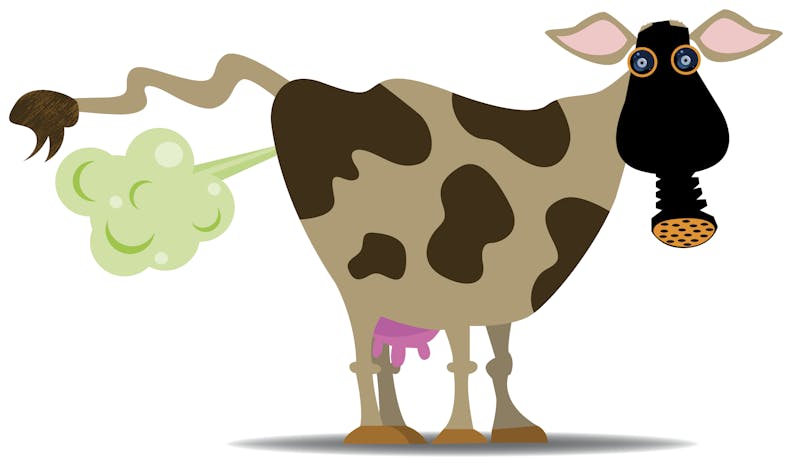



What about nasty methane?
Okay, so using grazing cows correctly can draw carbon dioxide out of the atmosphere, but what about methane (CH4), which is emitted through cow belches and farts? While having a shorter life in the atmosphere than CO2, methane has been shown to trap more radiation from the sun and therefore be a more potent contributor to rising temperatures.
“Yes, the grass that gets digested in the ruminant’s stomach will create methane. There is no doubt about that, ” said Chris Kerston of the Savory Institute. But he notes that healthy, carbon-rich soil is teeming with bacteria called methanotrophs, which consume methane and neutralize it.
“Conventional agriculture kills methanotrophs like crazy but healthy soils with methanotrophs keeps the methane emissions in check,” he says.
Rowntree agrees: “I do a lot of methane monitoring, and our data suggest the emission of methane in our agricultural practices is about 30% less than the formulas from the IPCC [International Panel on Climate Change] says it should be. Methane is a red herring. A combination of improved livestock management, improved soil health, and keeping the ground covered is what we should be focusing on.”
Upshot for savvy keto consumers
All this sounds great, but regenerative farming is now only a tiny fraction of the global agricultural sector. (Certified organic farming makes up about 1% of US farmland, regenerative agriculture, while not tracked, is likely even less.) So, what can keto meat eaters, who want to continue to improve their health by eating meat, do to help this burgeoning movement?
Kerston, Kittridge, Rowntree and others at the forefront of the farming side stress that informed consumers have a tremendous role to play in helping farmers in their efforts to regenerate the land and produce healthier soils and more nutritious food.
The Savory Institute is even creating a global Land to Market certification program that will create an objective verification of key measurements of soil and animal health, and certify products as having come from effective regenerative agricultural operations.
“We are measuring each piece of land and looking at about two dozen data points, compiling that to get a land health score over time. What we want to see is a net positive result in the land, so that the land is healing while still producing high quality products for human use and consumption,” said Kerston.
Land to Market certification is underway in the US, UK, Australia and Europe, but may take a few years before the program is widely available. Others, like the Rodale Institute, in concert with the company Patagonia, are putting other regenerative agriculture certification programs in place.
Until then, Kerston and others recommend consumers educate themselves about the issues and support as best they can regenerative agriculture programs and policies in their regions and countries. And where possible, buy products from local farmers who are using regenerative agriculture.
Says Rowntree: “I think anyone who has had their health improve on LCHF tends to be a more discerning consumer who knows the value of using their dollars to buy nutritious, beneficial food products rather than spending it on pharmaceuticals and healthcare. So more than anything, be more conscious of where your food comes from, be more conscious of engaging with people who produce your food. That can foster the greatest overarching benefit to local and regional food systems, the environment and the planet.”
In Part 3, we will look at economic incentives, carbon markets, agricultural policies and programs now underway that aim to make the products of regenerative agriculture, such as grass-fed meat, more affordable for all:
The green keto meat eater, part 3
Earlier
Top posts by Anne Mullens
Diet Doctor will not benefit from your purchases. We do not show ads, use any affiliate links, sell products or take money from industry. Instead we’re funded by the people, via our optional membership. Learn more ↩
